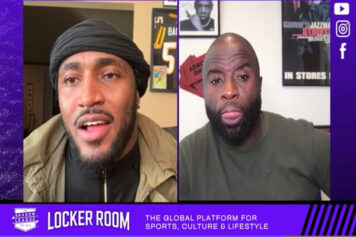For the past few years New York City has been hailed as a sort of mosaic city. A city where people of different colors, cultures and beliefs come to peacefully co-exist amongst one another and continue to add to the melting pot that is the Big Apple. But life in New York City during the ‘80s was an entirely different ballpark. Matter of fact, it wasn’t even the same sport. If living in New York today is a rat race, then life in New York in the 80’s was a dogfight, and the media played the role of Michael Vick while the police department played the part of Caesar “The Dog Whisperer” Milan. Let me explain.
In the wee hours of the morning of April 20, 1989, a 28-year-old white female jogger, Trisha Meili, was found beaten, gagged and raped in Central Park. Her facial injuries so severe that the only way her friends could identify her was by a piece of jewelry she wore. Jumping the gun as they usually did in those days, the police decided that a couple of kids that they arrested earlier for causing a ruckus in the same park were going to be held responsible for the atrocity one way or another, even though they were innocent.
With the help of footage and a score that featured some of the best hip-hop that the 1980’s had to offer, directors Ken and Sarah Burns and David McMahon take us back in time two decades to a New York City that was torn apart by, what else, race. Bernhard Goetz was being praised for “standing up for himself” and shooting four black teens; crack was turning the black and brown communities into forgotten wastelands; and Al Sharpton was fighting for civil rights while pimping a perm and rocking a medallion off his neck that I suspect was edible in case of emergency. The press made heroes of some and villains of most. Truth be told, it seemed as if you were the wrong color then you’d be labeled as such, and this led to a lot of barking and howling in the concrete jungle.
So it was no surprise that even though there was absolutely no physical evidence to incriminate any of the suspects, the police booked the two kids for the crime and the media crucified them to the point where Donald Trump put out an ad asking for the Death Penalty to be an option when dealing in cases like this. Then mayor Ed Koch called this the “crime of the century” even though around the same time a woman was raped and thrown off the roof of a building in Brooklyn, and the only person who probably cared was the owner of the car she landed on. Like Dough Boy once said, “either they don’t know, don’t show, or don’t care about what’s goin’ on in the hood.”
But Brooklyn is the land of the lost, and Manhattan is where the money is made. So when a white female banker was brutally raped and beaten, five minorities named Antron McCray, Kevin Richardson, Yusef Salaam, Raymond Santana and Kharey Wise (Korey Wise) just had to pay the price for simply being born a different color than the victim.
Through great emotion, each of the CP5 recall in vivid detail the infamous night that not only changed their lives, but the lives of anyone involved in this heartbreaking situation. How detectives John Hartigan and Humberto Arroyo played the good cop bad cop thing down to a tee so white that Dem Franchize Boys would take that rap. How they were held without food or sleep for hours on end and promised that if they pointed the finger at the next man that they’d go home. It may sound simple enough to tell a cop to go F themselves, but these were 14 and 15 year old kids being put through a police training exercise that they weren’t prepared for. They’d say anything to get out of an hour-long detention at school, imagine what they’d admit to after a full day or two of no rest and being screamed at non-stop?
Ultimately, the detectives got their coerced confessions with false promises of freedom, and the press got their circus.
While it’s easy to understand why these kids were automatically accepted as the criminals, it was just infuriating – to me anyway – to see how detective Elizabeth Lederer and prosecutor Linda Fairstein were determined to convict these youths even though they lacked evidence. No, the DNA didn’t match by a long shot, but the case was still being pursued as if it was a done deal. By the way, the detectives and prosecutors involved in this case declined to participate in the film. That should speak the kind of volumes that a Beats by Dr. Dre couldn’t do justice.
I choked up when I saw Raymond Santana Sr. tear up with guilt when he recalled sending his son to the park instead of hanging on the corner where he feared trouble. Listening to Angelica Richardson recount how helpless she felt in the hands of the NYPD was as upsetting as it was somber.
But nothing could really match the emotional taxing from the retelling of these events from the men themselves (Antron McCray wasn’t filmed for his portions). Though the men seem like they’ve moved on from the events, you can’t help but feel like they’re family members who were wronged and you want to help them find justice or vengeance even. If Kharey’s story on how he was lured by police into the crime – even though he wasn’t even a suspect – by telling him to simply accompany his friend to the station and see him home afterwards, isn’t enough to upset you, then you’re either Donald Trump or Jeffery Dahmer.
Though the CP5 were eventually cleared of the charges after serial rapist Matias Reyes (who police previously arrested for rape but was overlooked during the jogger case) confessed to the crime, there’s not happy ending to this. Childhoods weren’t just ruined, they were erased. Time is literally priceless and the time of five kids were not only taken, but taken advantage of. McCray mentioned that while in jail he took the highest paying job available, which paid 30 cents an hour.
You almost feel as if these five victims had the rotten luck of being born in the wrong decade. What with all the social media and Google, maybe this story would have had a different ending.
But they were victims of the 1980’s culture and no amount of money can rectify such a punishment. Their lives were bruised, scarred and mangled just as bad as that of Trisha Meili and even though they were cleared in 2002 of any crime, there wasn’t any parade or recognition on a national level. There wasn’t a public apology. In fact, Elizabeth Lederer said that she believe M. Reyes was the sixth member of the group and stood behind while everyone left to finish the job.



